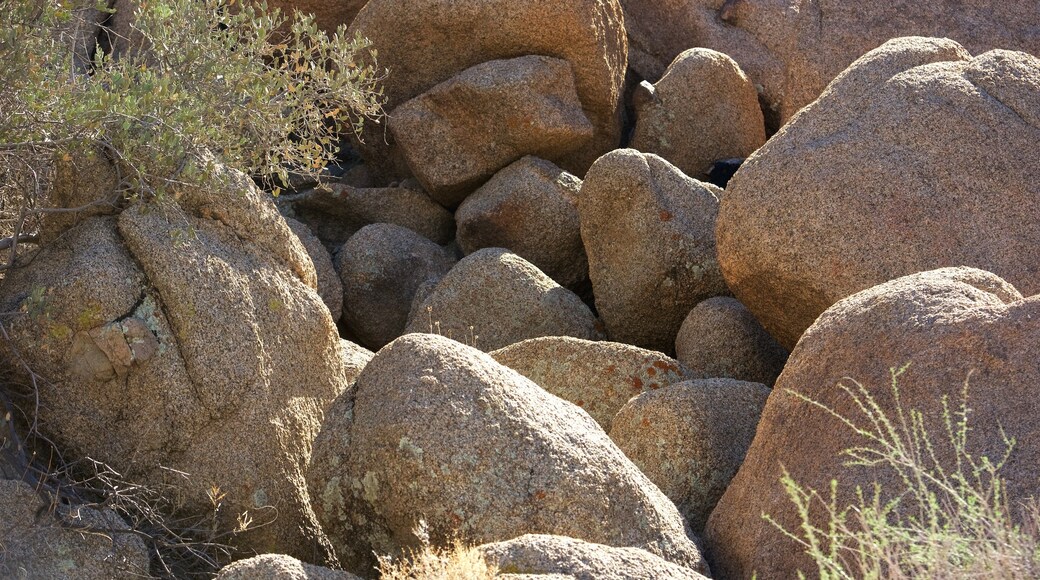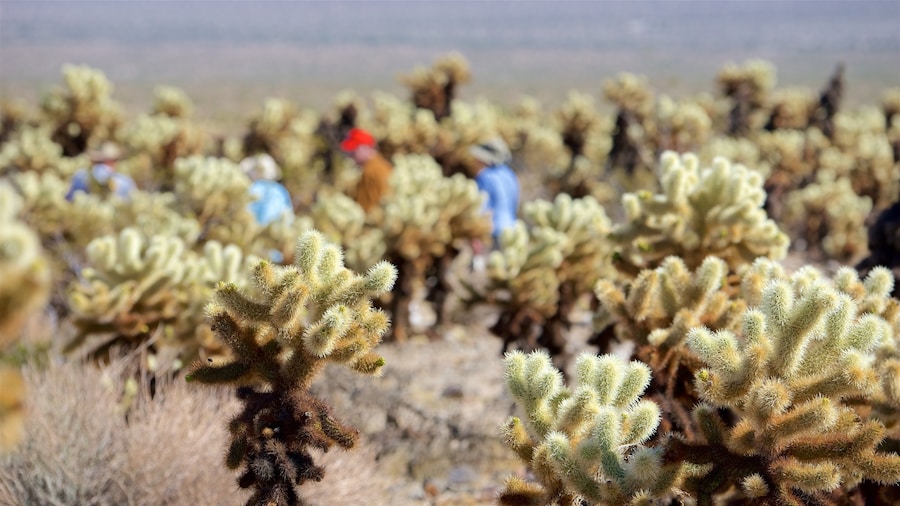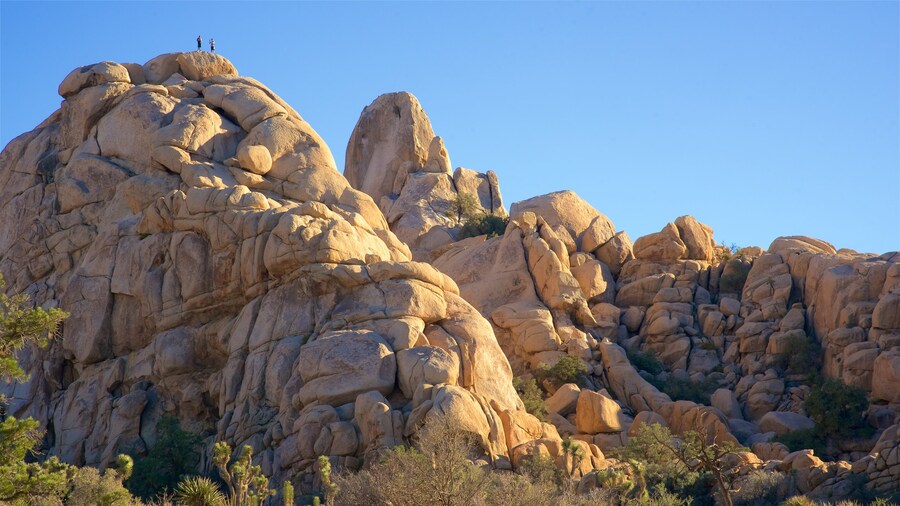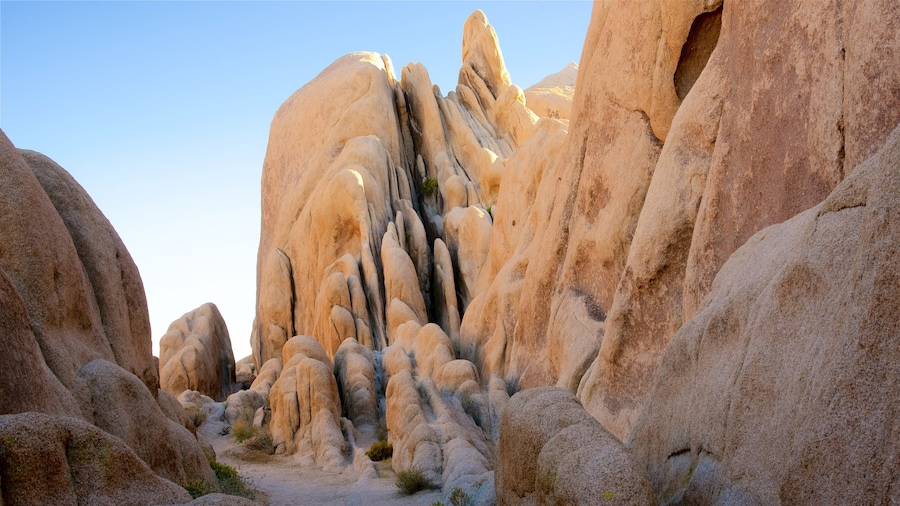Explore a lesser-traveled yet spectacular region of Joshua Tree National Park at Cottonwood Spring. Walk in the footsteps of tribespeople and pioneers on trails that lead past jaw-dropping landscapes. Join a ranger-led hike, enjoy scenic picnics and camp beneath big skies at Cottonwood Spring.
The spring is the aftermath of an earthquake and the encompassing water-rich soil creates an ecosystem for unique tree species to flourish. You’ll see century-old fan palms and tall cottonwood trees, whose golden leaves contrast perfectly with green palm ferns.
First mention of the spring was in 1875, when gold miners and prospectors arrived in the area. Prior to this, Cahuilla Indians used the spring while collecting and processing mesquite beans.
Set out on one of several trails that begin here. Follow a tree-lined wash to an oasis where bighorn sheep often come to drink water in the mornings. Continue past desert willows and palo verde to the ruins of Moorten’s Mill, established by Palm Springs pioneer Chester Moorten. Birding is great in the spring, with Gambel’s quails, prairie falcons and red-tailed hawks all visible.
See the ruins of mines on the Mastodon Loop Trail and appreciate the panoramic views from the top of Mastodon Peak. The peak is a magnificent natural viewpoint for watching the sunset, which drifts down behind giant boulders. Follow the Lost Palm Oasis Trail, an 8-mile (13-kilometer) route that incorporates a vast section of fan palms.
Bring plenty of water if you plan to hike any trail, especially during the hotter summer months.
Find the spring a 10-minute drive to the north of the Joshua Tree National Park South Entrance. There are parking facilities at the trailhead. Cottonwood Campground has 62 sites, picnic tables, potable water and toilets.
Cottonwood Springs is accessible year round. The nearby Cottonwood Visitor Center organizes ranger talks, guided walks and stargazing activities. Find more information on the official website of the Joshua Tree National Park.



















